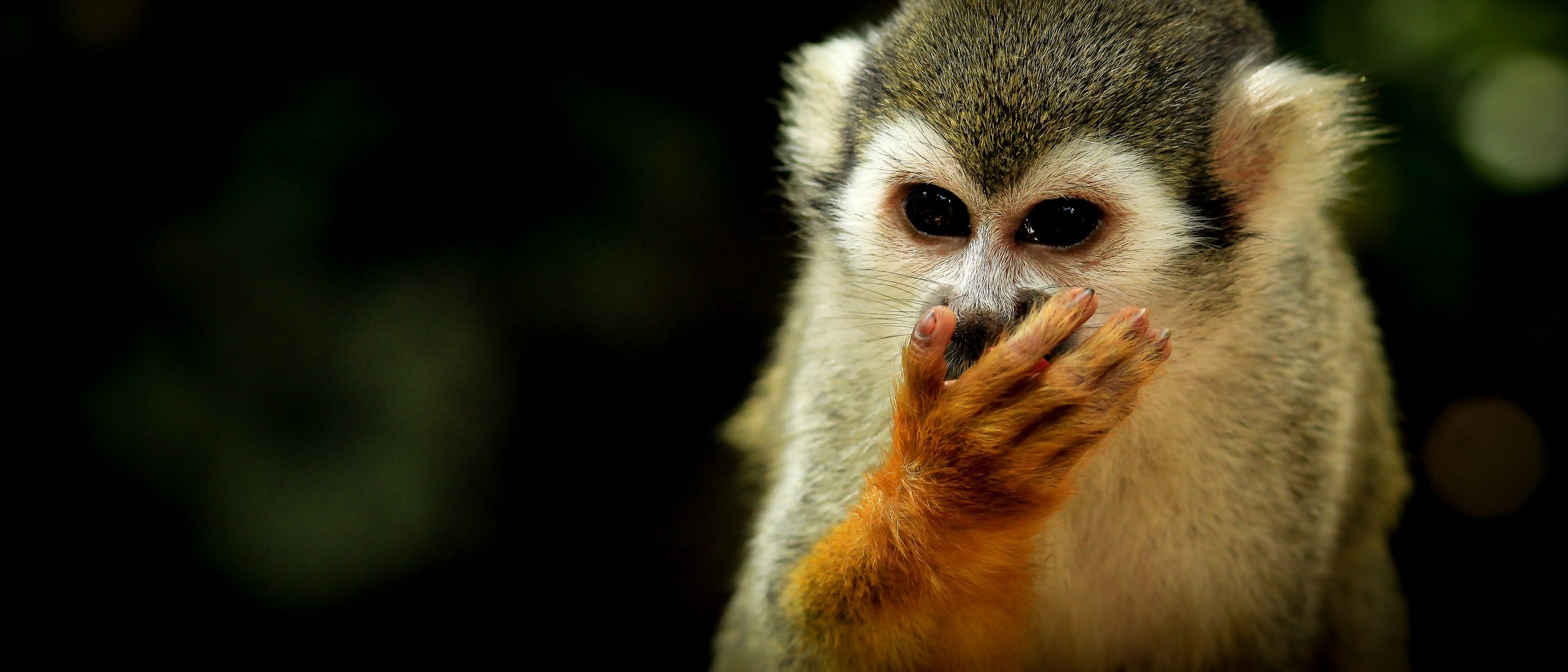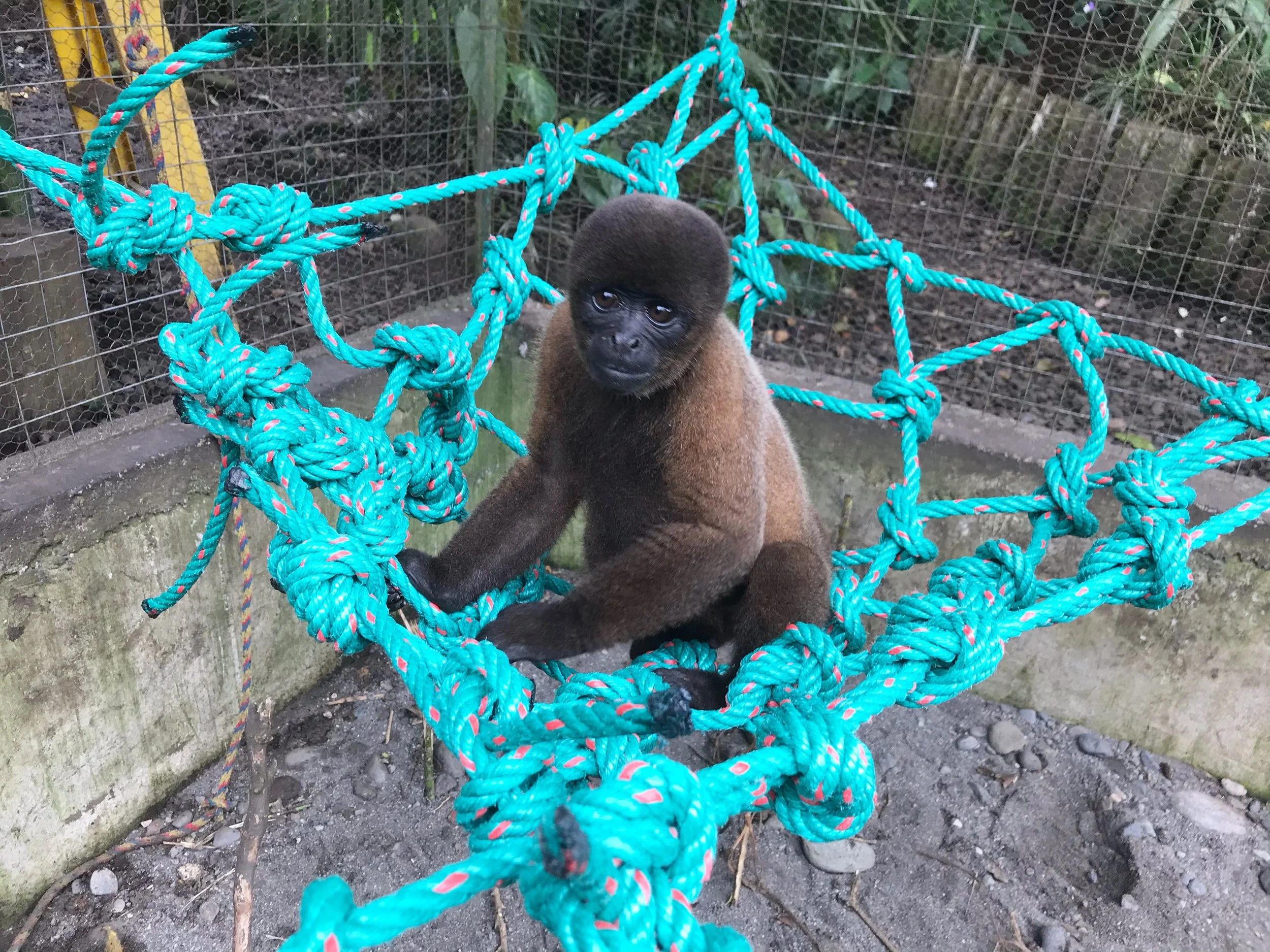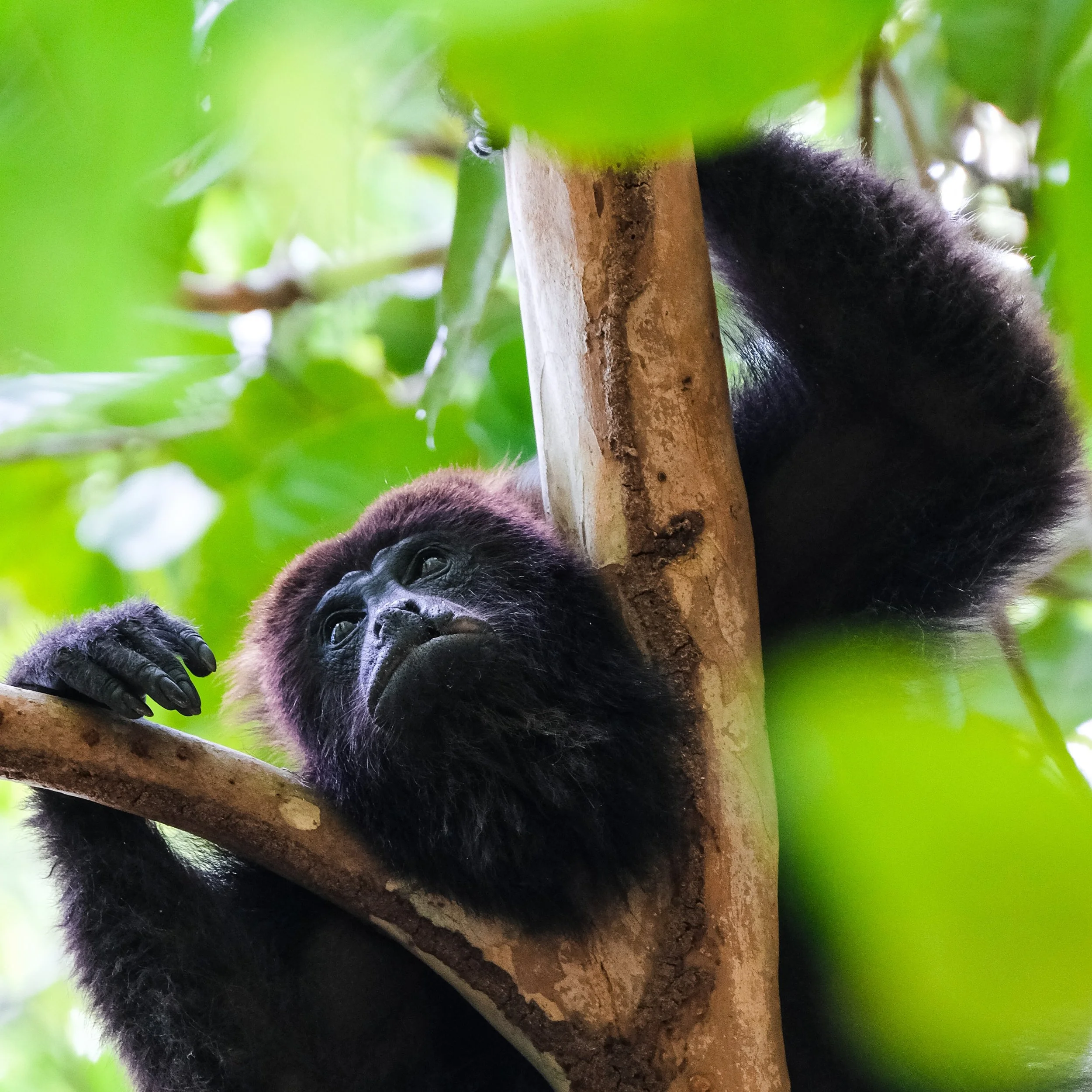
Creating Ideal Housing Conditions For Rehabilitating Primates
In regions across the globe where illegal wildlife trade is prominent, wildlife rescue and rehabilitation centers are plenty. These sanctuaries, which are oftentimes located deep in the jungle, operate in varying yet similar ways. Due to limited resources, isolated locations and a lack of professional staffing, wildlife rescue organizations often function by trial and error. Local people, experienced in handling the animals they’ve dedicated their lives to saving, work hard to provide rescued wildlife with the second chance they deserve. In understanding the challenges that come with properly rehabilitating primates, Jungle Rescue Reform is here to assist by providing some basic tips that many have found to be truly helpful in preparing victims of exotic pet trade for a life back in the rainforest.
Enrichment
All animal species require different forms of enrichment in order to thrive, but for primates this is especially true. There are many ways to provide enrichment to rescued monkeys. Sticks and rope, for example, can be used to create natural looking ladders. Netted material and potato sacs are useful for creating hammocks. Tires make ideal swings, and toys made out of leaves, shoots and even plastic bottles provide hours of fun and mental stimulation. These props are especially important for developing young primates and will eventually prepare them for life back in the trees.
Feeding time should also be treated as an enrichment opportunity. Although convenient, feeding monkeys from a plate or pile of food placed neatly on a platform or two is simply not ideal for healthy development and successful rehabilitation. Not only does it allow for resource guarding, it is also grossly unnatural. Food should be spread out and strategically placed between branches, in holes and in other hidden areas that allow for foraging.
Click the link below to learn how to tie rope knots and build your own enrichment hammock. Don’t worry about the details or making it perfect. If you can create the net part, that’s all that matters. Get creative with ways to hang it. Remember, these are wild monkeys, minor imperfections will help replicate the nature of their natural habitats.
Natural Resources
Unlimited access to natural resources can often be overlooked when providing housing for rescued primates. It is important to consider what role these resources play in the lives of each species in the wild and how such resources help keep the animal both physically and mentally healthy. Pseudo environments should be designed in ways that allow animals to benefit from natural resources the same way they would in nature. Monkey’s should have access to a sufficient supply of natural sunlight as well as rainfall, however, there should also be plenty of spaces which provide cover from the rain and shade from the sun. Some wildlife rescue administrators have decided to create mini tree houses, designed to protect animals from harsh weather conditions. Plants and trees should also be abundant and must be utilized in a way that emulates the animals’ natural habitat as well as provides a natural source of food where possible.
Socialization
One of the most misunderstood elements of primate rehabilitation is socialization and the impact socialization, or rather, the lack thereof, will have on the animal as it ages or develops. Primates are social creatures. The same way a completely isolated child will struggle fitting into society as an adult, monkeys that are not properly socialized, especially at a young age, will similarly find it challenging to join or build new troops in the wild. Without a group, the animal will likely fail to find mating opportunities and will therefore be unable to contribute to the continuation and genetic diversity of its local species’ population. They may find it difficult accessing food and shelter, and will be more vulnerable to predators and other forms of danger. As social creatures, isolated individuals will likely grow depressed and lonely, making them more prone to behavioral abnormalities and weakening their immune systems - increasing their susceptibility to illness and disease.
We understand socialization is not always readily available for rescued individuals, but contrary to popular belief, primate socialization does not always need to immediately exist between two animals of the same species. For orphaned babies with no available surrogate, for example, one or two human caretakers can certainly assume this role. These relationships are essential for providing a nurturing upbringing for infants and a balanced environment for juveniles, where they can learn how to socialize and begin to understand the elements of hierarchy. Wild animals can and will separate the relationship they build with one or two human caretakers from the potential threat posed by complete strangers.
Companionship can also come in the form of non-conspecifics, where animals of entirely different species can learn to coexist for the sake of preventing loneliness and boredom. It is crucial that rescued wildlife are not held in solitary enclosures, with the exception of a few species. Cohabitation between very closely related species, however, should be approved by a biologist, zoologist, primatologist, etc. as these individuals may be capable of producing hybrid offspring, which can be incredibly harmful to the animal itself and highly unethical!



